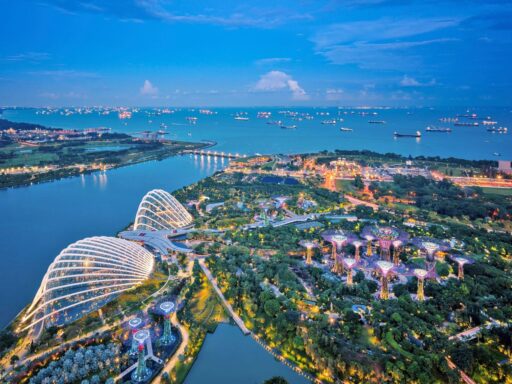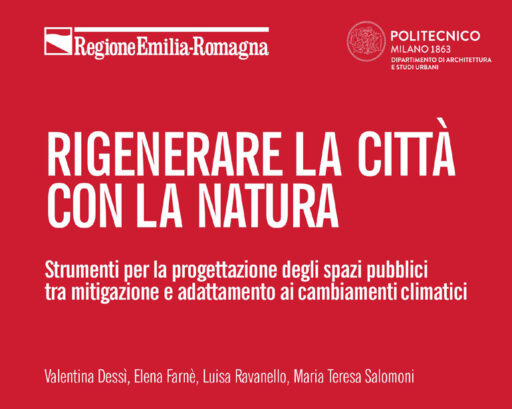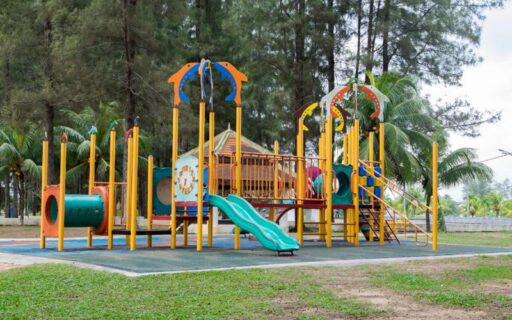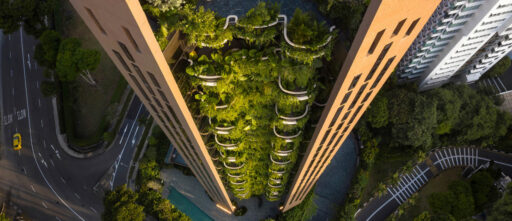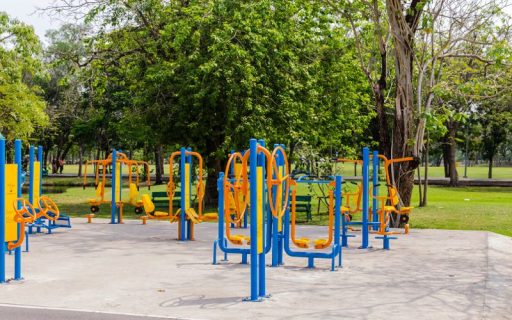Urban public park
Definitions - Functions - Regulations and design
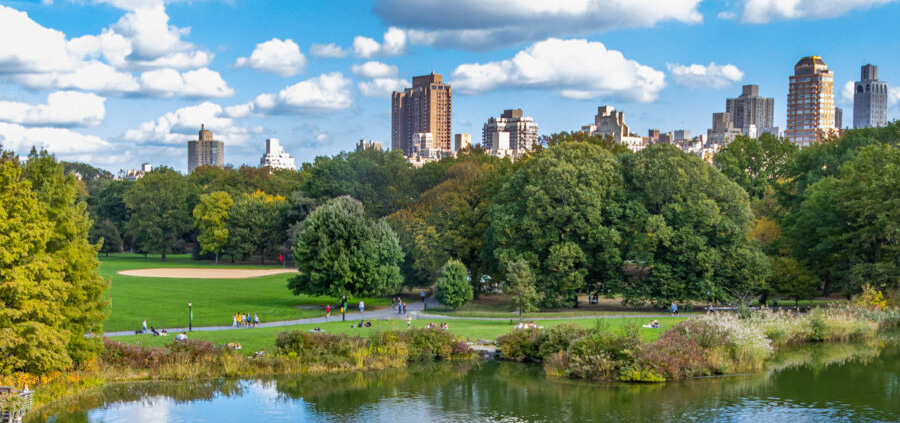
More than just green space, the urban public park represents the vibrant heart of a city, offering a much-needed respite from the hustle and bustle of urban life. Parks play a fundamental role in improving the quality of life, promoting social interaction and fostering a sense of community. In fact, city parks fulfill numerous functions: from hosting community meetings and recreational activities, to serving as habitats for local flora and fauna.
However, creating and maintaining equipped natural green areas is not an easy task. It involves complex planning and design and compliance with specific regulations to ensure they meet the needs of all users while preserving the environment. The design of a public park is nothing more than a delicate balance between aesthetics, functionality and sustainability.
Below we will have the opportunity to delve deeper into the numerous functions, regulations and projects that give shape to these urban oases. We will discover how these green spaces not only offer a respite from city life, but also contribute significantly to the ecological, social and economic fabric of our cities.
The importance of green areas in an urban context
In today’s rapidly urbanizing world, the presence of green areas in an urban context has become increasingly important. Urban public parks serve as vital community spaces, providing a wide range of benefits to residents and tourists alike. These green spaces offer a respite from the concrete and asphalt-covered land, allowing people to connect with nature and enjoy a peaceful environment. Furthermore, urban public parks serve as social hubs, bringing people together and promoting a sense of community and belonging.
Advantages of urban green areas
One of the main benefits of urban public parks is their contribution to the general well-being of individuals. Research has shown that spending time in green areas can have a positive impact on mental health, reducing stress and improving mood. The presence of trees, plants and open spaces in urban environments has been linked to lower rates of anxiety and depression, as well as improved cognitive function. Therefore, the presence of accessible green areas in cities is essential to promote a healthy lifestyle and improve the quality of life of residents.
Another significant benefit of urban public parks is their role in mitigating the effects of climate change. As cities continue to expand, concrete surfaces replace natural landscapes, resulting in the formation of urban heat islands. Green areas act as natural cooling systems, reducing temperatures and improving air quality. Trees and plants help absorb carbon dioxide, a major greenhouse gas contributing to global warming. By incorporating urban public parks into city planning, we can create more sustainable and resilient communities.
Furthermore, urban public parks play a crucial role in promoting physical activity and encouraging a healthier lifestyle among city dwellers. These green spaces provide opportunities for recreational activities such as walking, jogging, cycling and playing sports. Regular exercise has numerous health benefits, including reducing the risk of chronic diseases such as obesity, heart disease and diabetes. By providing accessible and well-maintained urban public parks, we can encourage people to engage in regular physical activity and improve their overall well-being.
Urban green areas: types of parks and gardens
There are different types of green areas present in urban contexts, each with its own characteristics and purposes.
Urban public park
A common type of green area is the urban public park. These areas are typically large in size and offer a wide range of amenities and recreational activities for residents. They often include playgrounds, sports fields, picnic areas, walking trails and even water features.
Urban public parks are designed to meet the diverse needs and interests of local people, offering spaces for relaxation, exercise and social interaction. They serve as gathering places for families, friends and community groups, promoting a sense of community and healthy lifestyle.
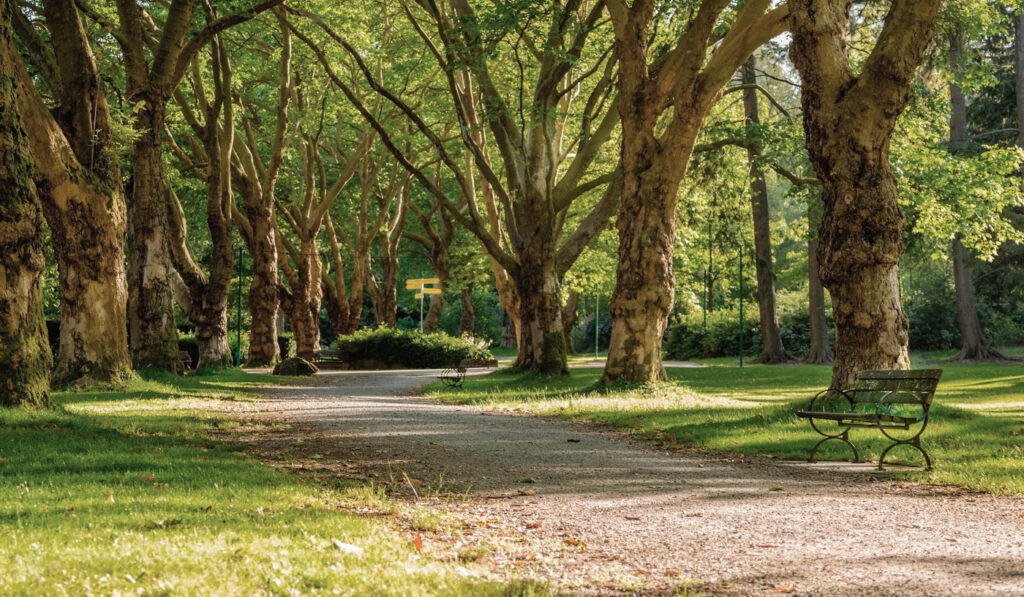
Public gardens
Another type of urban green area is the public garden. These meticulously designed and landscaped areas are dedicated to showcasing a variety of plant species from around the world.
Public gardens often feature thematic sections or collections, highlighting specific types of plants or ecosystems. They serve as educational resources, offering visitors the opportunity to learn about different plants and their habitats. Public gardens also contribute to the conservation of biodiversity, preserving rare or endangered plant species.
Small urban park
In addition to urban parks and botanical gardens, there are also smaller urban green spaces, generally dedicated to the inhabitants of the neighborhood. These compact green areas are typically located in densely populated neighborhoods where space is limited.
Small urban parks provide a much-needed green oasis in otherwise concrete-dominated environments. They can include features such as seating areas, small gardens, children’s play areas or even art installations. Small parks offer a place for relaxation and contemplation, providing a sense of tranquility amidst the urban chaos.
Urban public park: characteristics and functions
An urban public park is an essential component of any well-planned city. These parks offer a wide range of benefits to both residents and tourists, making them a crucial element of urban planning.
Urban public park: characteristics
The features of an urban public park can vary, but typically include open green spaces, recreational facilities, and amenities such as benches, walking paths, and water features.
One of the main characteristics of an urban public park is open green spaces. These areas provide a peaceful retreat from the busyness of city life, offering residents a place to relax and unwind.
Recreational facilities are another important feature of urban public parks. These facilities may include playgrounds, sports fields and fitness equipment. By providing these services, parks encourage physical activity and help combat sedentary lifestyles.
Benches, pedestrian paths and water features cannot be missing in a public park. These elements improve the usability and accessibility of the park, making it a more inviting space for residents and tourists. The benches offer seating for relaxing or socializing, while the pedestrian paths allow easy use of the park. Water features, such as fountains or artificial ponds, add visual interest and create a relaxing atmosphere.
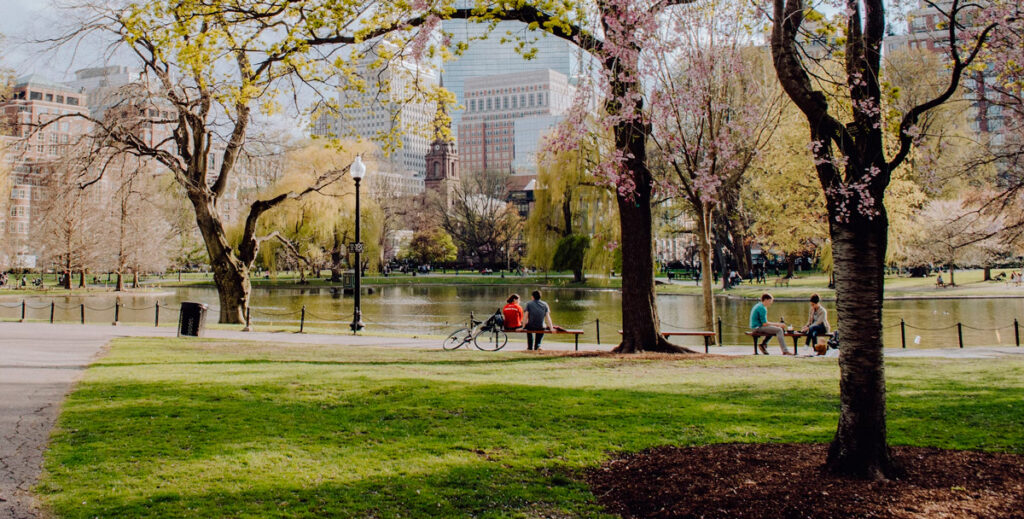
Finally, every urban public park must have some useful services that make it more pleasant and welcoming. Among these services, areas dedicated to dogs, refreshment points, toilets, security, etc. cannot be missing.
By incorporating these amenities, urban parks become more inclusive and attractive to more people.
Urban public park: functions
As we anticipated, urban public parks perform several important functions.
Social and recreational
Urban public parks serve an important social function in cities, providing a space where people gather, interact and engage in various activities. These parks serve as a communal meeting place, where individuals of different ages and backgrounds can meet and form social bonds.
Whether it’s families enjoying a picnic, friends playing sports, or strangers sitting on a bench and striking up a conversation, urban public parks facilitate social interactions that contribute to the overall well-being of the community. Additionally, these parks often host events and activities that promote cultural diversity and community engagement, fostering a sense of belonging and unity among residents.
Overall, the social function of urban public parks cannot be underestimated, as they play a vital role in creating social bonds and improving the quality of life in cities.
Naturalistic function
Urban public parks contribute to the overall quality of life in a city. They represent a break from the concrete jungle and offer a connection with nature. It has been shown that the presence of green spaces in urban areas reduces air pollution, mitigates the heat island effect and promotes biodiversity. These ecological benefits improve the overall sustainability and livability of a city. Additionally, parks can increase surrounding property values and attract tourists, benefiting the local economy.
Mental and physical health and well-being
Urban public parks can play a crucial role in promoting physical activity among city dwellers. These parks provide a safe and accessible space for people of all ages to engage in various activities that promote physical fitness. With well-maintained paths for walking and jogging, fitness equipment and open spaces for sports, the urban public park offers the opportunity to practice regular physical activity.
The areas must be designed for the different fruition targets:
- Individual physical activities, such as walking, running, fitness, etc. To promote and encourage this type of physical activity, users must be able to use dedicated routes, as well as equipment to carry out fitness activities or other sports (climbing, skateboarding, etc. ).
- Group activities, such as team games and various group activities (yoga sessions, dance workshops etc.), which encourage social interaction and make physical activity more enjoyable.
By providing an environment conducive to physical activity, urban public parks can help improve the overall health and well-being of city dwellers
Playful function
Urban public parks can play a crucial role in promoting recreational activities among individuals of all ages. The design and layout of these parks can be optimized to encourage play and social interaction. This may include the presence of spaces for various play equipment such as swings and slides, but also bowling greens, tables for playing chess, and much more.
Educational and civic training function
The urban park contains a rich cultural aspect and serves as a valuable educational resource. Various elements contribute to this purpose, such as information panels, paths among the trees, shared gardens and social gardens. These elements aim to educate visitors about the park’s natural features, including the city’s vegetation, wildlife, history and culture.
Cultural function
Entertainment in urban public parks is a complex and delicate topic, especially when it comes to events that attract large audiences. However, it is essential to find a balance that allows for areas dedicated to small events such as readings and concerts, which perform a fundamental cultural and aggregative function. These smaller events are more frequent and easier to manage, ensuring that the park continues to fulfill its role as a valuable public space. By offering a variety of entertainment options, urban public parks can cater to diverse community interests and needs, further strengthening their importance as vibrant and engaging spaces.
Public park: Urban Green law of 2013
Law no. 10 of 14 January 2013, which reports the “Regulations for the development of urban green spaces“, is a regulation that aims to promote and enhance green spaces in urban areas. With rapid urbanization and increasing population density in cities, it has become crucial to prioritize the creation and conservation of green spaces. The law recognizes the importance of urban greenery for the environment, public health and quality of life in general. It seeks to ensure that each urban area has sufficient green space to meet the needs of its residents.
One of the key provisions of the Urban Green law is the obligation for new urban development projects to include a certain percentage of green space. This can be in the form of public parks, gardens or even green roofs on buildings.
Another important aspect of the Urban Green law is the conservation and protection of existing green spaces. The law prohibits the destruction or conversion of green areas for purposes other than greenery without appropriate authorization.
Law 10/2013 is a significant step towards creating sustainable and healthy cities. By highlighting the importance of urban greenery, it encourages a more balanced approach to urban development. With increased awareness and implementation of this law, we can expect to see more vibrant, environmentally friendly cities that prioritize the well-being of their residents.
Download law 10/2013 in PDF format from the Ministry of the Environment website.
Other rules
Depending on the type of space to be designed, there are a series of regulations that must be respected. Let’s see some examples:
- Skate track. UNI EN 14974 standard.
- Areas intended for children’s play. UNI 1123-2004 standard.
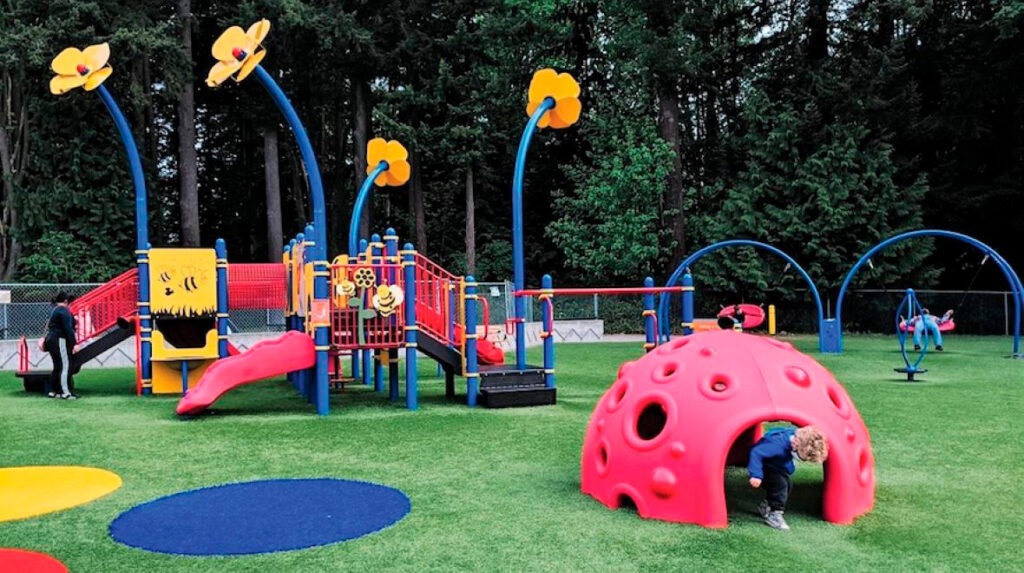
At the same time, every type of equipment present in the park must be produced in compliance with current regulations.
Design of an urban public park: road map
The design of an urban public park is a creative process that requires the use of technical analysis tools and knowledge of environmental, urban planning and landscape issues.
In this paragraph we will analyze the design process of an urban public park.
1. The preliminary project
The preliminary project of an urban public park allows a general economic evaluation of the works and is used above all for planning expenditure estimates for the client (most of the time, the Municipal Administration). Among the most important documents to develop in a preliminary project are:
- Explanatory report.
- Graphic works.
- Summary calculation of the expense.
2. The final project
The definitive project fully outlines the necessary building works, respecting the requirements, criteria, constraints, guidelines and indications established in the preliminary project. It includes all the elements necessary for issuing the necessary authorizations and approvals.
Among the most important documents to be drawn up in a definitive project are:
- Descriptive report. It reports the design criteria used, the materials chosen and the structures integrated within the area.
- Graphic works. Of the structures and architectural solutions, of the surfaces and volumes to be created.
- Estimative metric computation.
2. The executive project
The executive project of an urban public park determines in detail the works to be carried out and the related expected expenditure.
Among the most important documents to be drawn up in an executive project are:
- Descriptive report.
- Graphic works.
- Bill of quantities and economic framework.
- Special tender specifications.
Conclusions and reflections
An urban public park is an important component of any well-planned city. Its features, such as open green spaces, recreational facilities and services, contribute to its functionality and charm. Urban parks promote physical activity and well-being, provide spaces for social interaction and community events, and improve the overall quality of life in a city. By incorporating these features and functions into urban planning, cities can create vibrant, livable spaces for their inhabitants.
Cover photo: Manuel Velasquez on Unsplash





























































